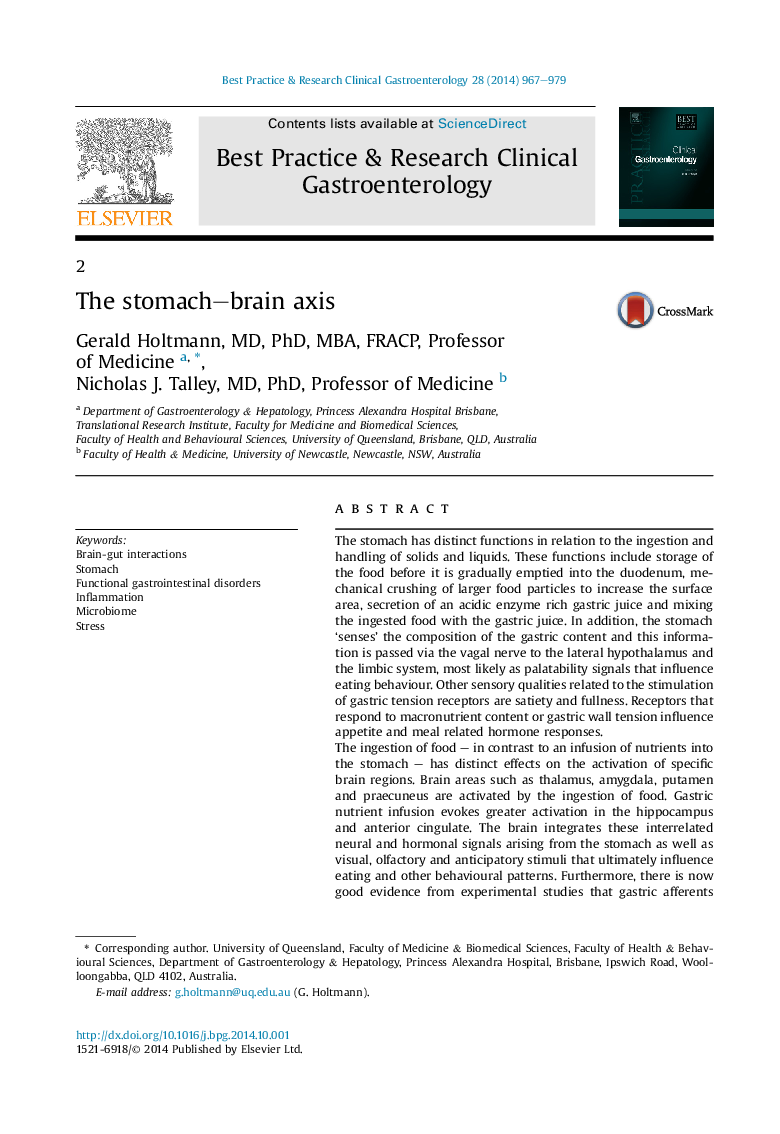| Article ID | Journal | Published Year | Pages | File Type |
|---|---|---|---|---|
| 3254067 | Best Practice & Research Clinical Gastroenterology | 2014 | 13 Pages |
The stomach has distinct functions in relation to the ingestion and handling of solids and liquids. These functions include storage of the food before it is gradually emptied into the duodenum, mechanical crushing of larger food particles to increase the surface area, secretion of an acidic enzyme rich gastric juice and mixing the ingested food with the gastric juice. In addition, the stomach ‘senses’ the composition of the gastric content and this information is passed via the vagal nerve to the lateral hypothalamus and the limbic system, most likely as palatability signals that influence eating behaviour. Other sensory qualities related to the stimulation of gastric tension receptors are satiety and fullness. Receptors that respond to macronutrient content or gastric wall tension influence appetite and meal related hormone responses.The ingestion of food – in contrast to an infusion of nutrients into the stomach – has distinct effects on the activation of specific brain regions. Brain areas such as thalamus, amygdala, putamen and praecuneus are activated by the ingestion of food. Gastric nutrient infusion evokes greater activation in the hippocampus and anterior cingulate. The brain integrates these interrelated neural and hormonal signals arising from the stomach as well as visual, olfactory and anticipatory stimuli that ultimately influence eating and other behavioural patterns. Furthermore, there is now good evidence from experimental studies that gastric afferents influence mood, and animal studies point towards the possibility that gastric dysfunction may be a risk factor for mood disorders such as anxiety and depression. The stomach is also not only colonised by Helicobacter pylori but a large array of bacteria. While there is sufficient evidence to suggest that H. pylori may alter caloric intake and mood, the role of other gastric microbiome for the brain function is unknown. To address this appropriate targeted gastric microbiome studies would be required instead of widely utilised opportunistic stool microbiome studies.In summary, it is now well established that there are important links between the brain and the stomach that have significant effects on gastric function. However, the stomach also influences the brain. Disturbances in the crosstalk between the stomach and the brain may manifest as functional GI disorders while disturbances in the stomach–brain communication may also result in an altered regulation of satiety and as a consequence may affect eating behaviour and mood. These observations may enable the identification of novel therapies targeted at the gastroduodenum that positively alter brain function and treat or prevent conditions such as obesity or functional gastrointestinal disorders.
